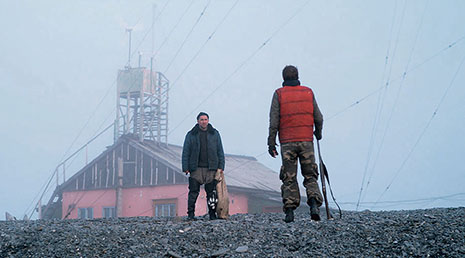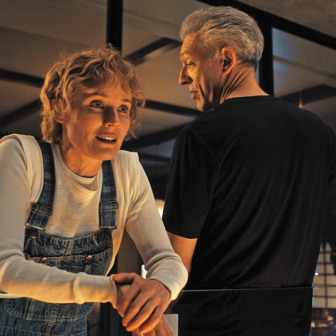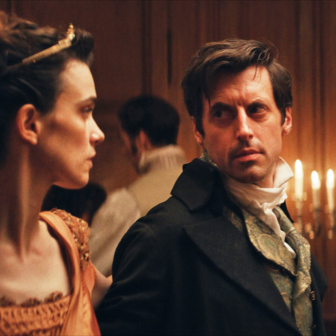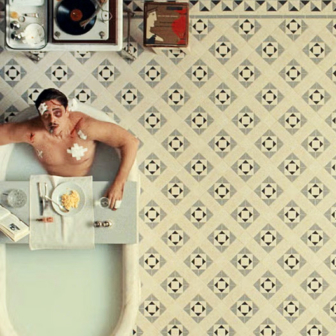THERE are the movies, the astonishing gallery at present 115 years long; and then, within that gallery, there’s cinema. The implied boundary is blurred, mobile, floating; but there are times when it has to be affirmed, and one of those, as we cruise the circuits, is now. It works as experience, and what it means for any film to become more than the sum of its parts. It has to do levels of transformation, and with how much you’re left to think about afterwards.
How I Ended this Summer (writer/director, Aleksei Popogrebsky; cinematographer, Pavel Kostomarov) is, supremely, cinema. It is set somewhere inside the Arctic Circle, where young Pavel (Grigory Dobrygin) is completing a graduate assignment at the metereological station run at a remote outpost by the older, taciturn Sergei (Sergei Puskepalis). They live and work in a group of rough timber barns, manning a beacon, checking readouts, working the computer and two-way radio communication with remote headquarters. There’s not much conversation, and they rarely eat together. Both are emotionally incompetent; it becomes clear that Sergei, whose heart is with a wife and child in a faraway city, prefers to be on his own, and that Pavel has no idea how to make moves toward friendship. While the summer sea is open, Sergei would rather be off fishing for Arctic trout. He goes AWOL from the station; Pavel must cover for him, awkwardly, when urgent messages come in. Then there’s one that seriously concerns the family; on Sergei’s return, Pavel can’t find a way to break it to him; and when a helicopter comes puttering over, the pilot fails to see Pavel’s waving flare. There’s a fine Russian tradition at work here; as connections fail, we’re in a truly Chekhovian domain, and the struggle is more ethical than psychological.
But the symbolism is deeply grounded in the physical world. There’s a polar bear on the mountain, and Pavel is told that one of the station’s earlier personnel came off worst in an encounter with this bear, or his brother. The animal advances in the middle distance, and as Pavel flees desperately, skidding downward over rock and stone, a burst of snow reminds him and us that summer will end, and soon. High, wide shots of the station on its spit of land take in sky and ocean, the low huddle of buildings; the light changes, in a range of subtle blues and greys. But when dusk prevails, the story is not after all fading out, and for all the spectacular geography we’re not in a travelogue. The sound design communicates entangled elements; there’s elusive, intermittent music (Dmitriy Katkhanov’s), but it’s embedded, interwound with perpetual radio static and the whining wind. There’s high tension – will these two ever really face each other? – and decisions to be taken on both sides. Nor is the far Arctic free from politics; when another helicopter swoops away with a load of frozen fish, this food for humans could – because of human blundering – be carrying radioactive contamination.
In all the praise for this film, Tarkovsky has been invoked. There was only one Andrei Tarkovsky (1932–1986), lost too early to the world; but in another generation, Popogrebsky and his near-contemporary Alexei German Jr (Paper Soldier) inherit their shares of Tarkovskian poetry, and they’re also dealing in their fashions with Putin’s Russia, its poverty and its threats. They speak to the day of Fukushima, and it would be timely to have another look at Stalker, that astonishing work of Tarkovsky’s which, in 1979, foresaw Chernobyl. These later films work under its shadows.
Never Let Me Go has been the much-praised artwork of the moment, with admittedly fine performances, gentle pacing and prevailing autumnal light. Directed by Mark Romanek from the novel by Kazuo Ishiguro, it works with that writer’s characteristic tone of elegy for what’s lost and might have been. The youth and beauty of the main characters suggests the lives they should have had; in the extended opening chapter, made of boarding-school assemblies, classrooms and playgrounds, they appear as very healthy kids, set for real futures. They don’t know yet that they’re clones, deliberately brought into being to donate their vital organs on reaching adulthood, and to expire, at around thirty, with that duty done. There’s no suspense around this; one intrepid teacher (Sally Hawkins) insists on telling the kids the truth about their lives early on. In this over-engineered plot, it makes no difference.
Carey Mulligan has been highly praised in her role as Kathy, whose task as a carer delays her own doom; but I’ve met some in the audience who confess to getting sick of her invincible virtue. Others were held by Keira Knightley’s beautiful face; but for me the memorable performance was that of Izzy Meikle-Small (aged ten or thereabouts) as Kathy in the protracted opening segment, which shows the three protagonists as children in the sinister closed world of their school. There Charlotte Rampling, with her witch’s eyes, does a great job as an evil headmistress.
The child’s vitality there threatens to give the lie to the whole schema, in which there’s no real drama because there’s no resistance to the overhanging force. I’d call it quasi-Orwellian, if that weren’t injustice to Orwell; his fictions did have links to the world of his day, and so achieved the status of fable. In Never Let Me Go the elements of fable are embryonic – you’ve got to dig to find them. There’s no convincing discord; a burst of useless rebellion from Andrew Garfield’s Tommy, a wan and futile plea for reprieve, and as the insistent violin lament needlessly reminds us, we can only go down from there. For me and others I know, this film left a taste of dishonesty; if you like, a feel-bad movie.
The Canadian Barney’s Version (director, Richard J. Lewis) offers a mild cure. Paul Giamatti’s Barney Panofsky is an enjoyable portrait of a real slob, one created by Mordecai Richler in his last novel: a self-deluding Montreal businessman who exasperates his wife by getting drunk and disorderly at dinner parties, but blunders through the world with some success; he runs a soap-opera factory called Totally Unnecessary Productions. Through Barney’s first two marriages, despite the pleasures of Minnie Driver’s haywire act in the second of those, the film threatens to stay on the level of farce. It’s rescued, to a point, by Dustin Hoffmann’s wry intelligence as Barney’s improbable father, and the pleasures of the Leonard Cohen songs; the last chapter touches down on reality. American reviewers have hated this one inordinately, while some Australians have given it credit for wit and compassion; I think they’re right.
A more telling answer to dystopian fabrications is My Afternoons with Margueritte (director, Jean Becker). Margueritte – the double t, she explains, was her father’s mistake when she was born something over ninety years ago – lives in a kindly, civilised aged-care place which, eventually, her family can’t afford. Late in the story, she gets stuck – temporarily – in the hell of an appalling, crowded establishment in which the elderly and helpless have no lives worth living. But along the way, she has made a close friendship with Gérard Depardieu’s lumbering, near-illiterate odd-job labourer Germain Chavez, and for him she has opened the pleasures of reading. This is unashamedly a feel-good movie, so she is of course rescued, with the promise of spending her final years in good company. Gisèle Casadesus is an elegant and witty Margueritte, Maurane a marvellously fiery bartender in the bistro which is Germain’s real home, Claire Maurier convincingly demented as his thoroughly dysfunctional mother, and Sophie Guillermin a lively girlfriend who struggles to understand what it is for him with Margueritte.
There’s much more here than sweetness and provincial sunlight. This film throws a searchlight on to the under-recognised needs of old age for purpose and valid forms of connection; dare we say it, for work; and there’s also a story here about the place of literacy in life. I treasure the sequence in which Germain, without human company in bed at night, discusses the problems of the dictionary with his cat. •





